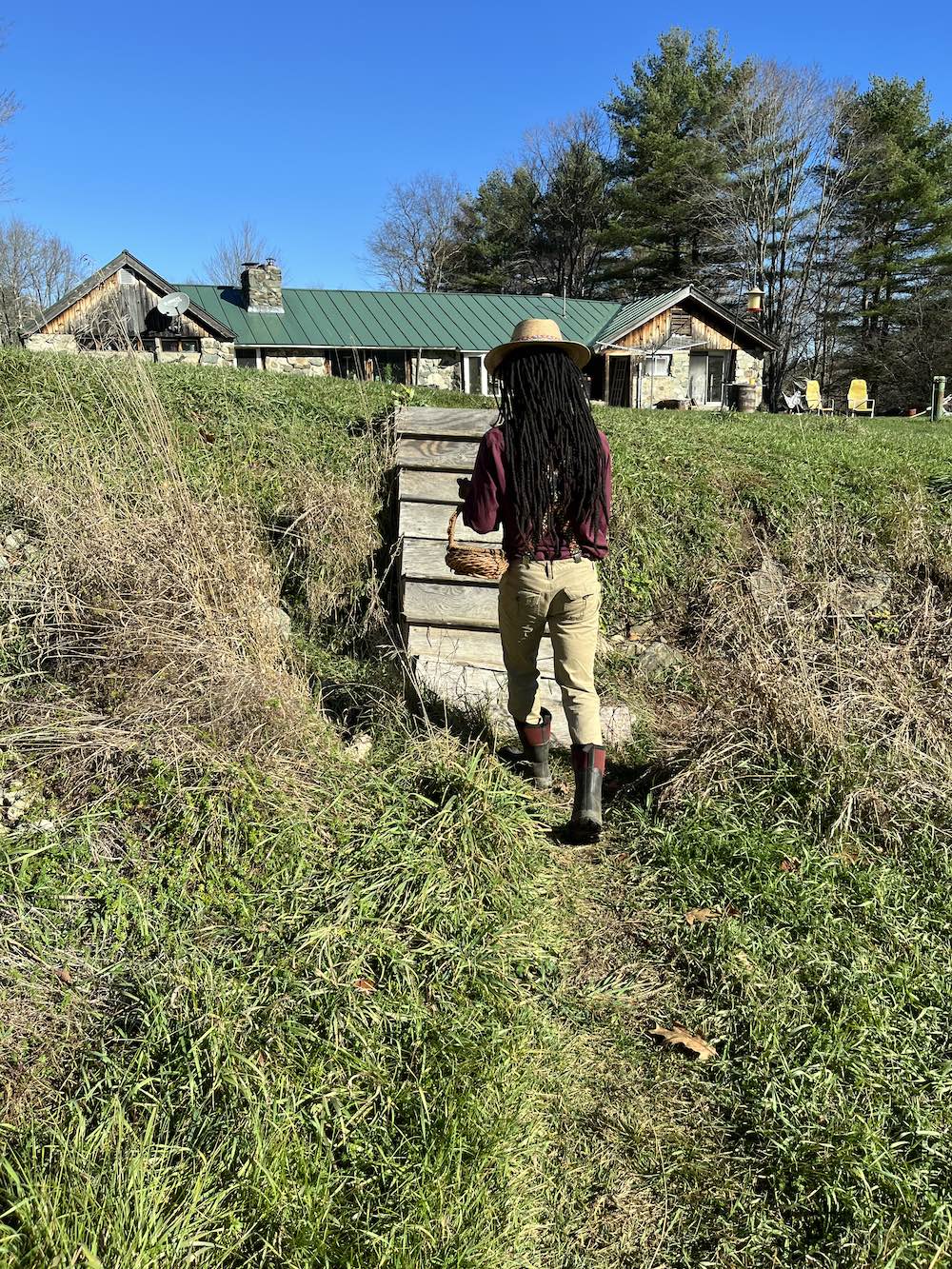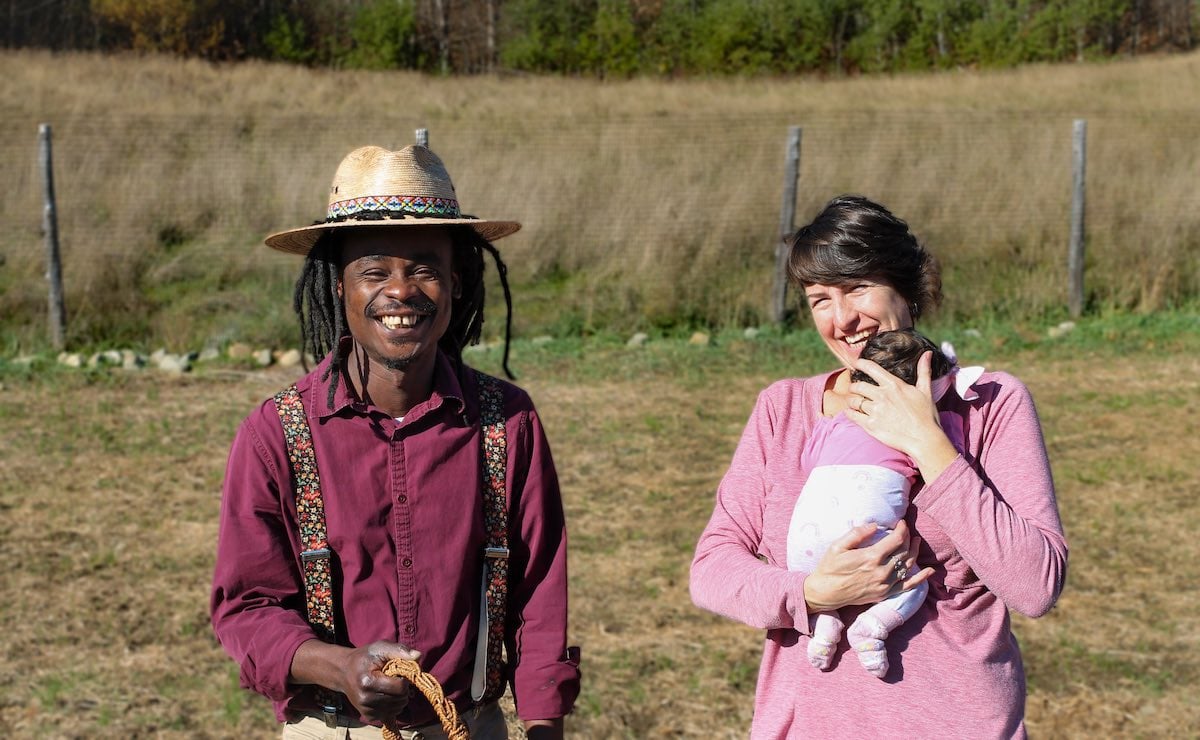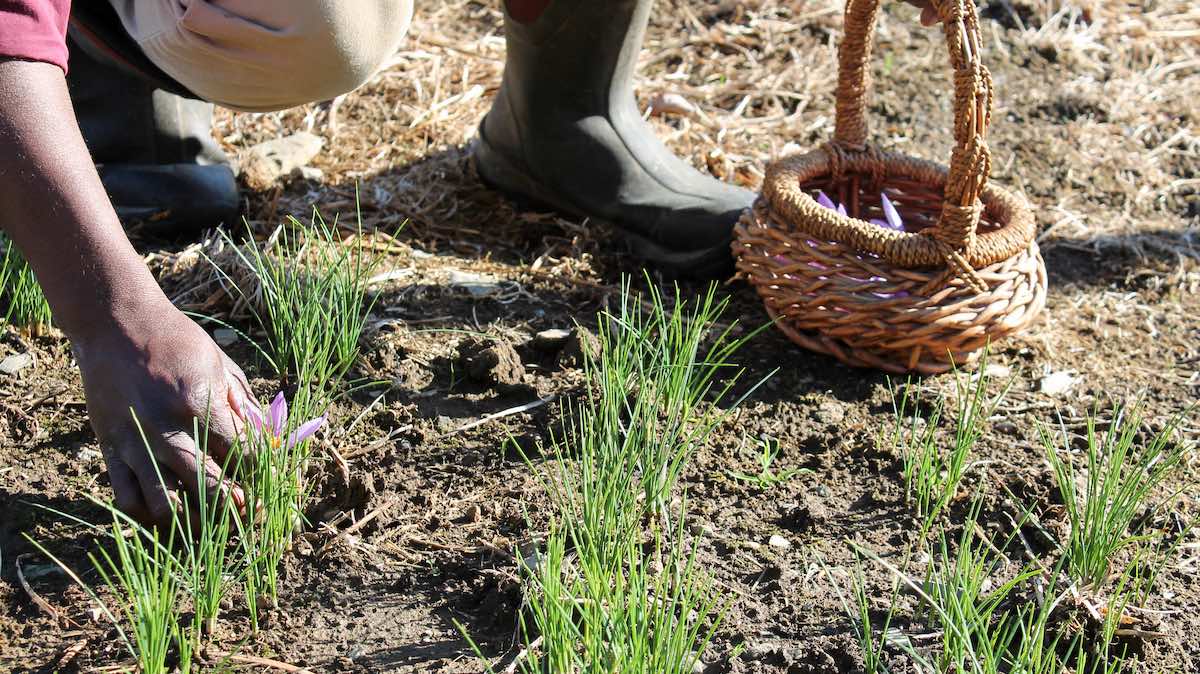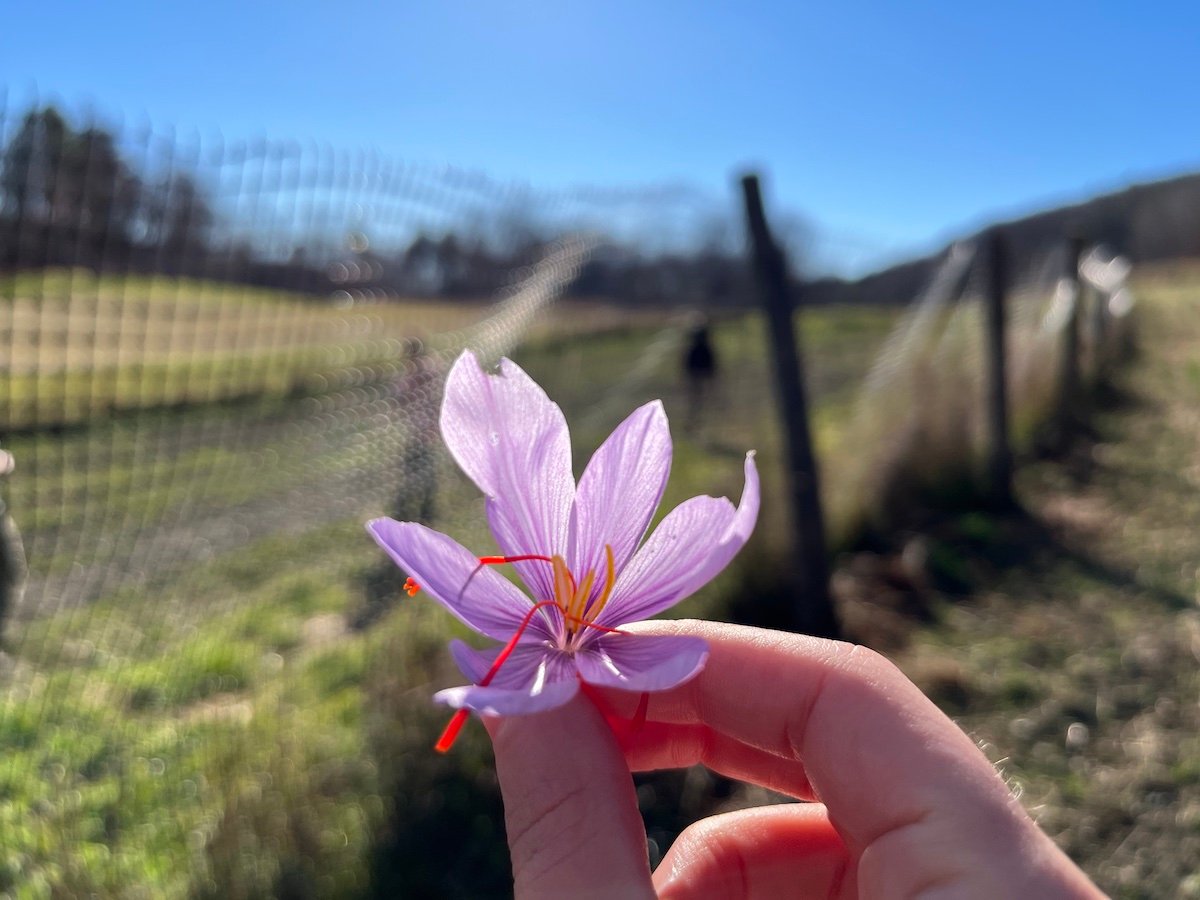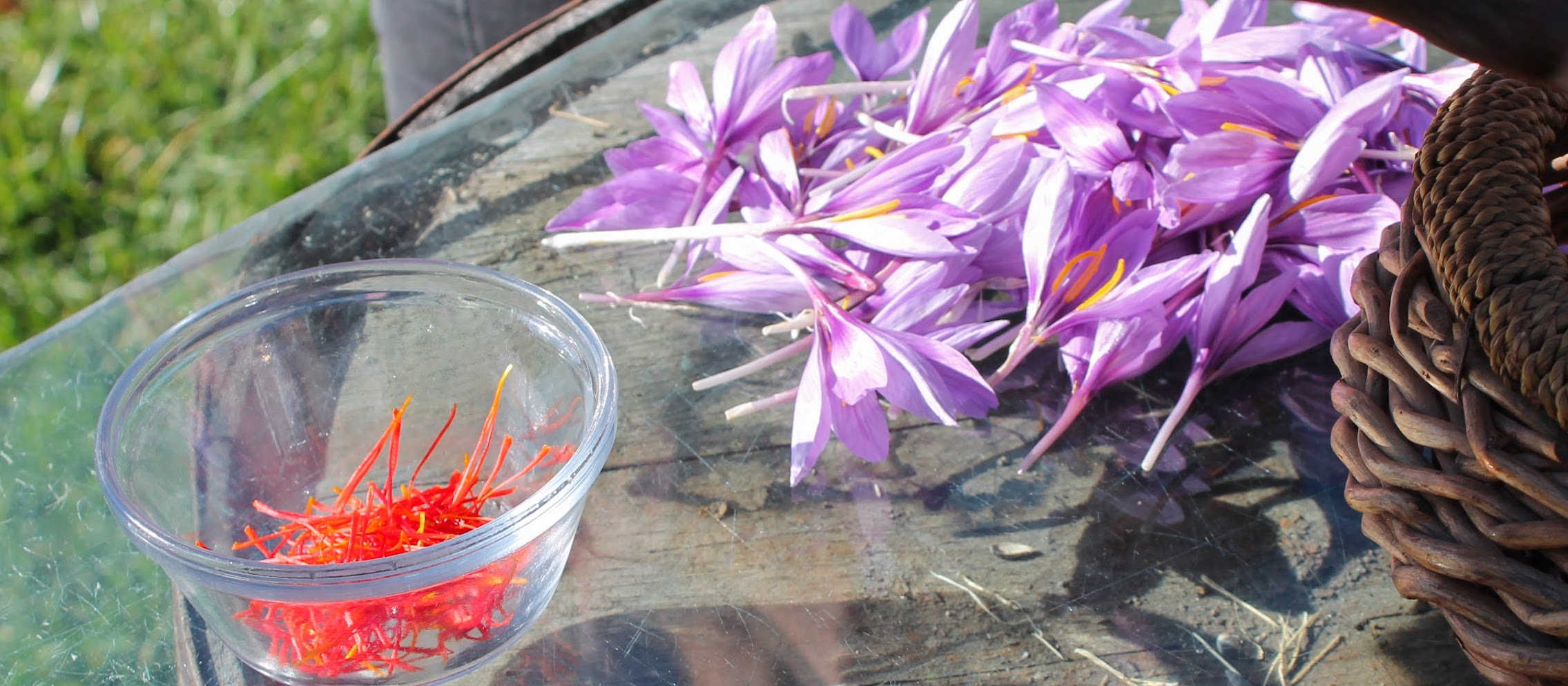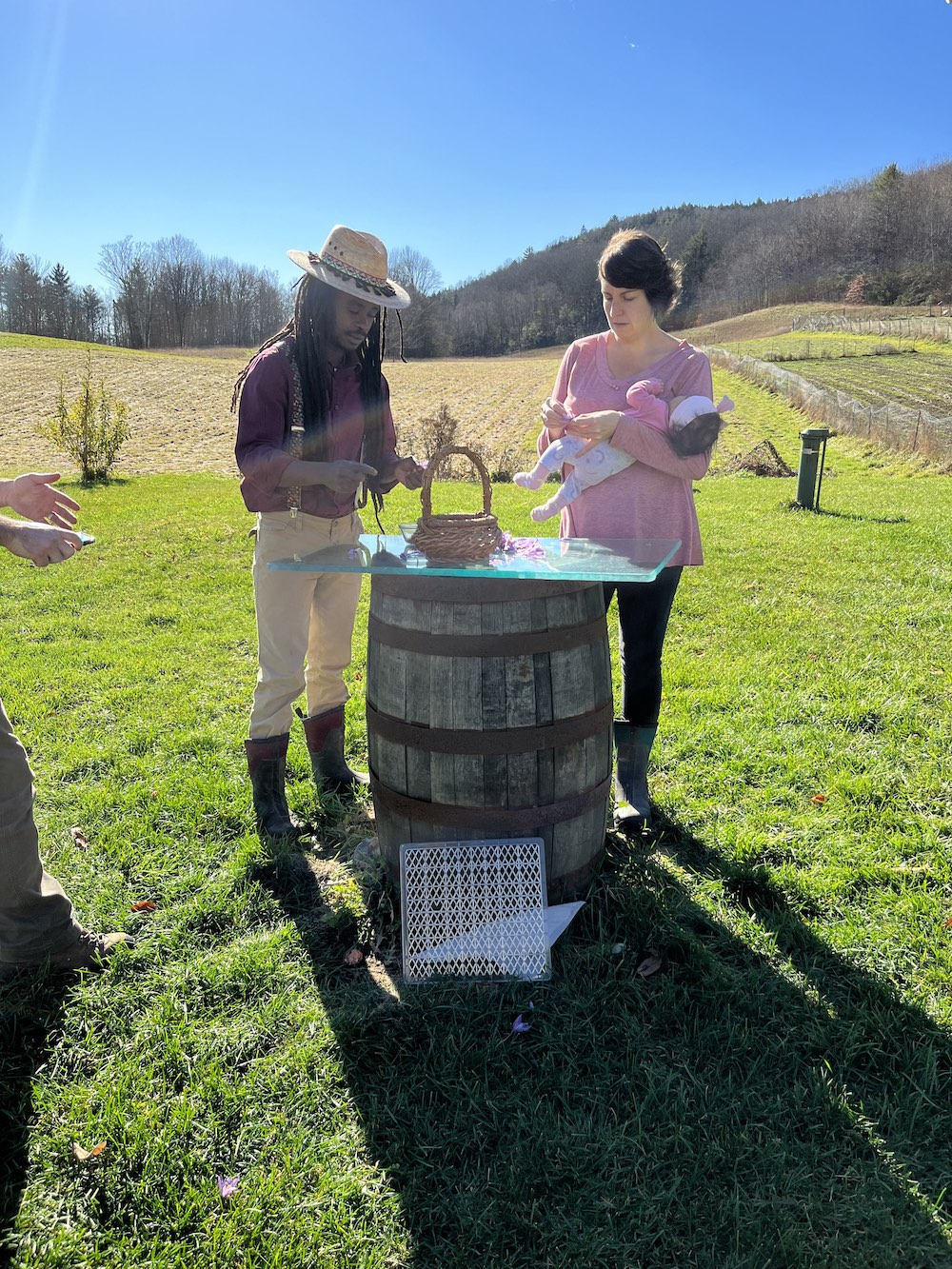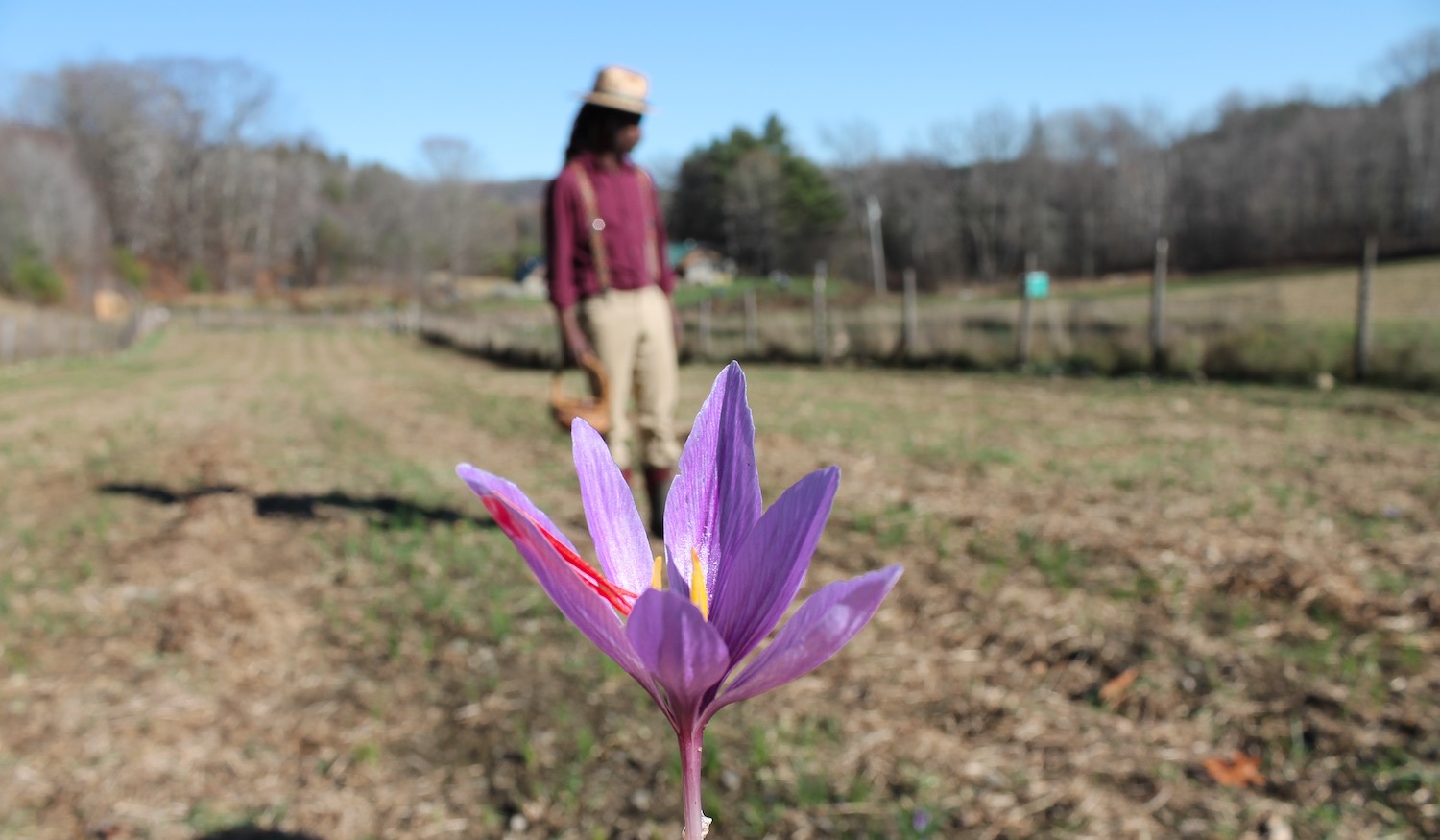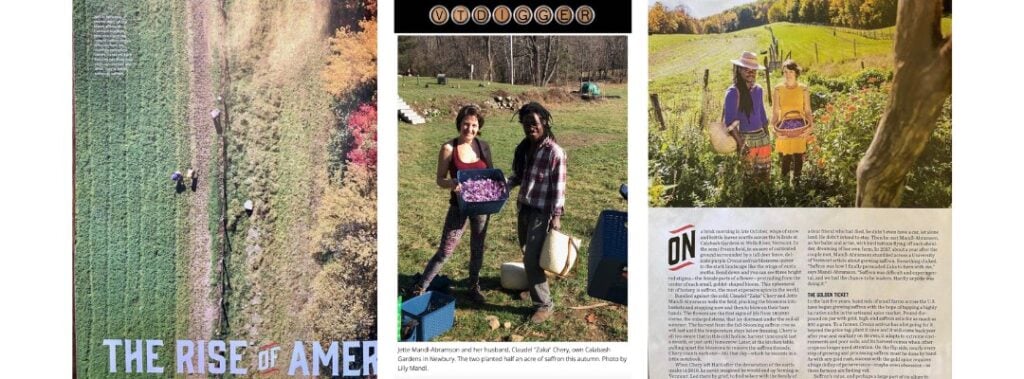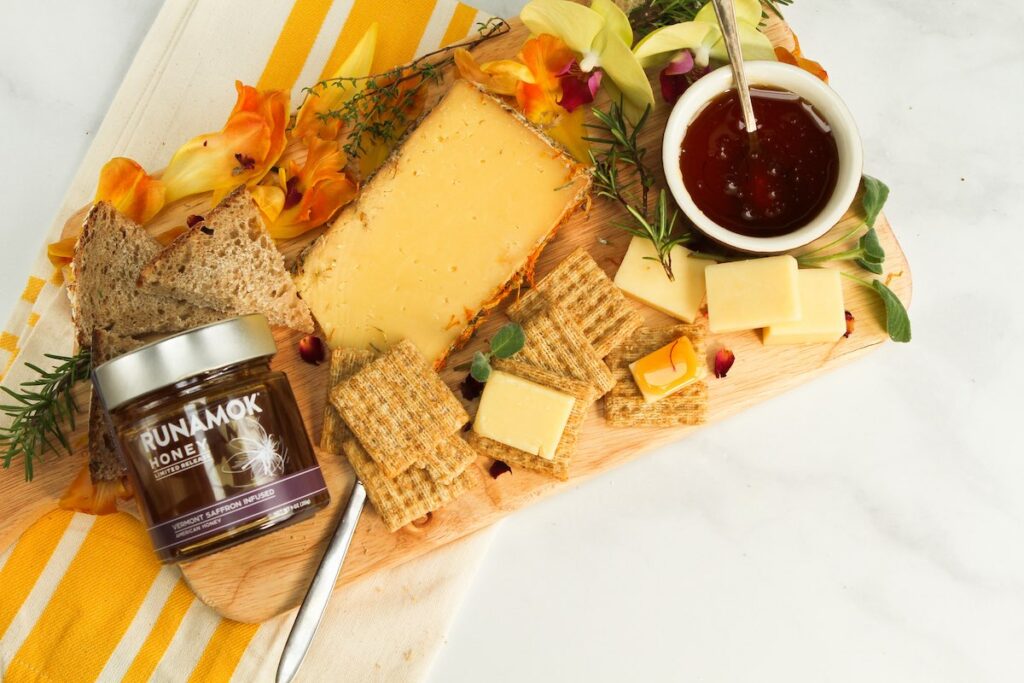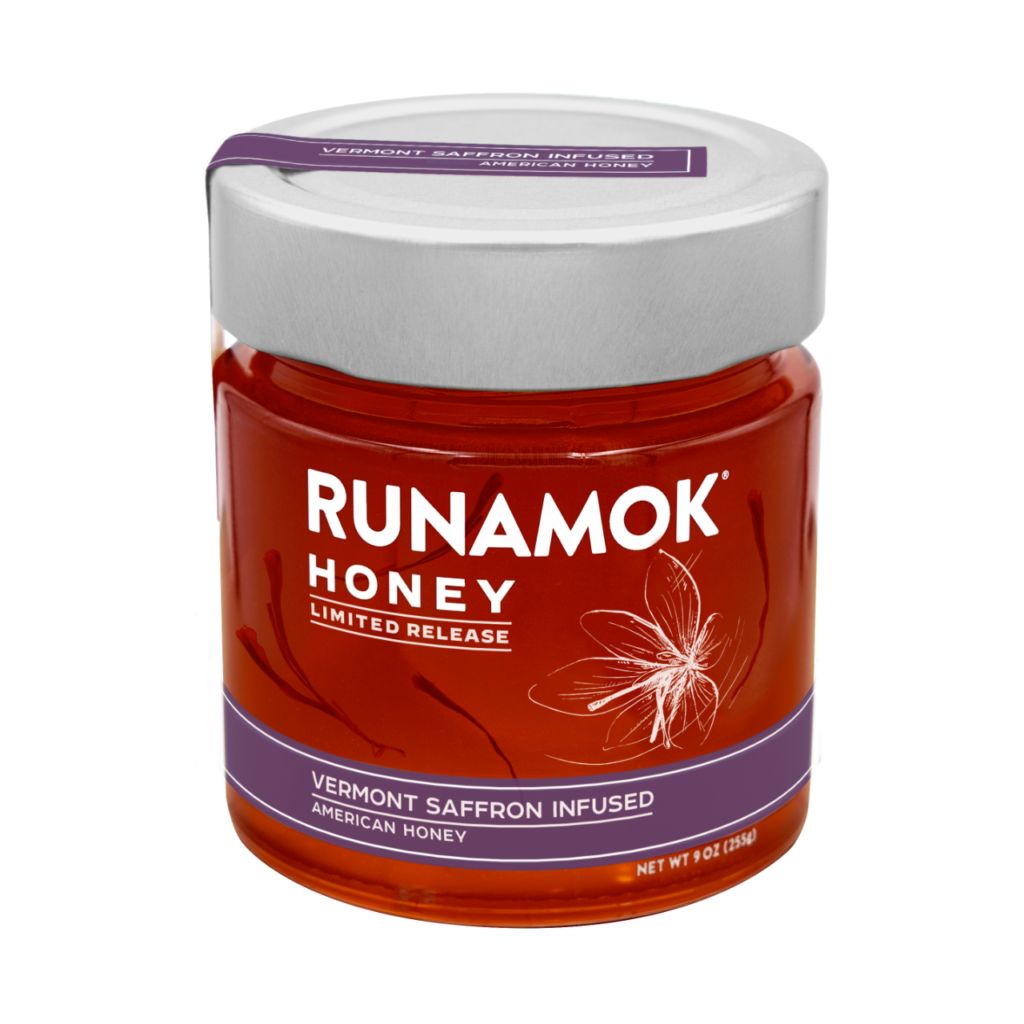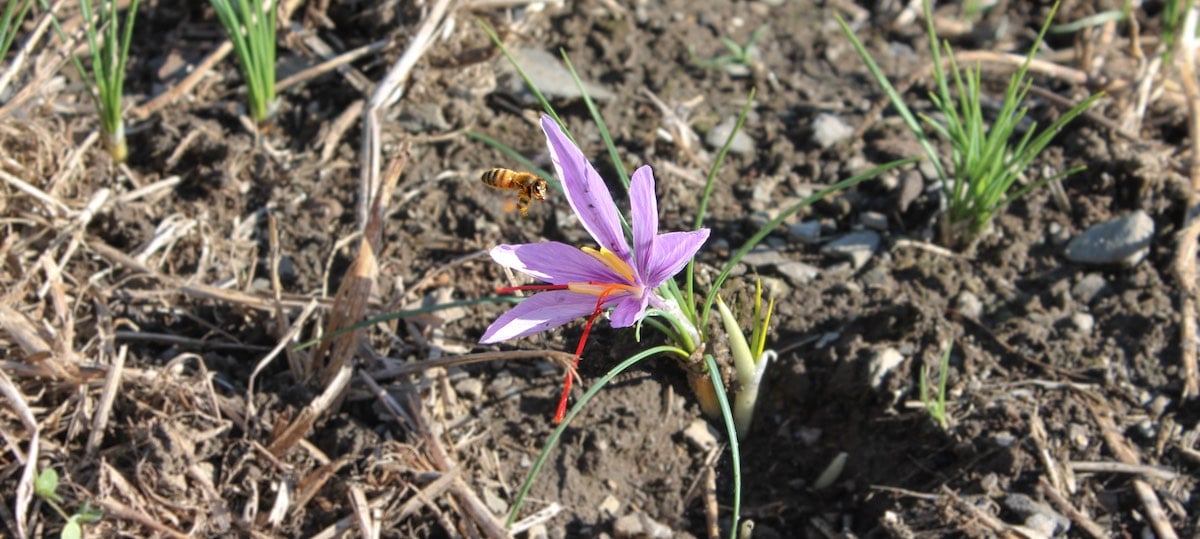
VERMONT SAFFRON INFUSED HONEY
Our new Vermont Saffron Infused Honey combines the richness of late summer wildflower honey with the sultriness of middle eastern spice. This is the first Runamok honey infusion that begins with a base of our beekeeper’s cut autumn blossom honey, which amplifies the floral characteristic of the saffron. Whole strands of saffron are added into each jar of premium U.S.-sourced wildflower honey to let all of its complexity bloom. The spice not only adds an earthy, floral note but enhances the qualities of the honey itself. Simply put, saffron takes honey to a deeper place.
Perhaps the most surprising aspect of this new product is our source of saffron; it is Vermont-grown. While the majority of saffron comes from the middle east, our home state also has a climate conducive to growing a very high quality crop. All of the saffron used in this release was grown by our partners at Calabash Gardens, a Black and Woman owned regenerative agriculture saffron farm in the heart of Vermont. Our beekeeper’s cut autumn blossom honey, which we use as the base for this infusion, is also sourced from Winter Apiaries in neighboring New York state.
We love that this worldly-tasting product is made with American honey and ultra-locally grown spice.
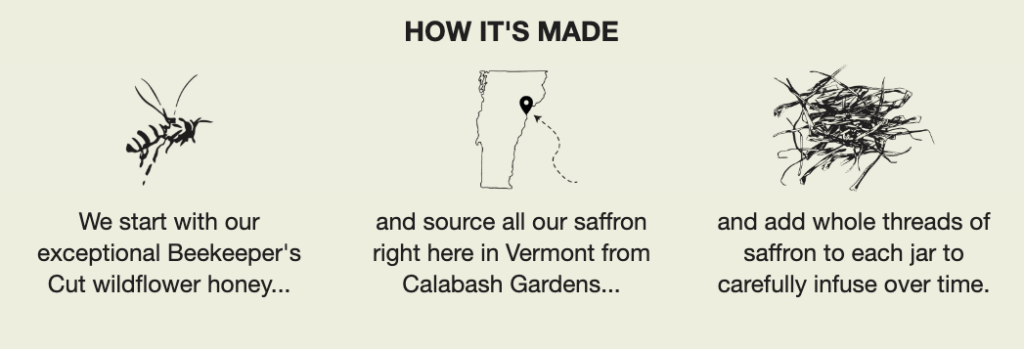
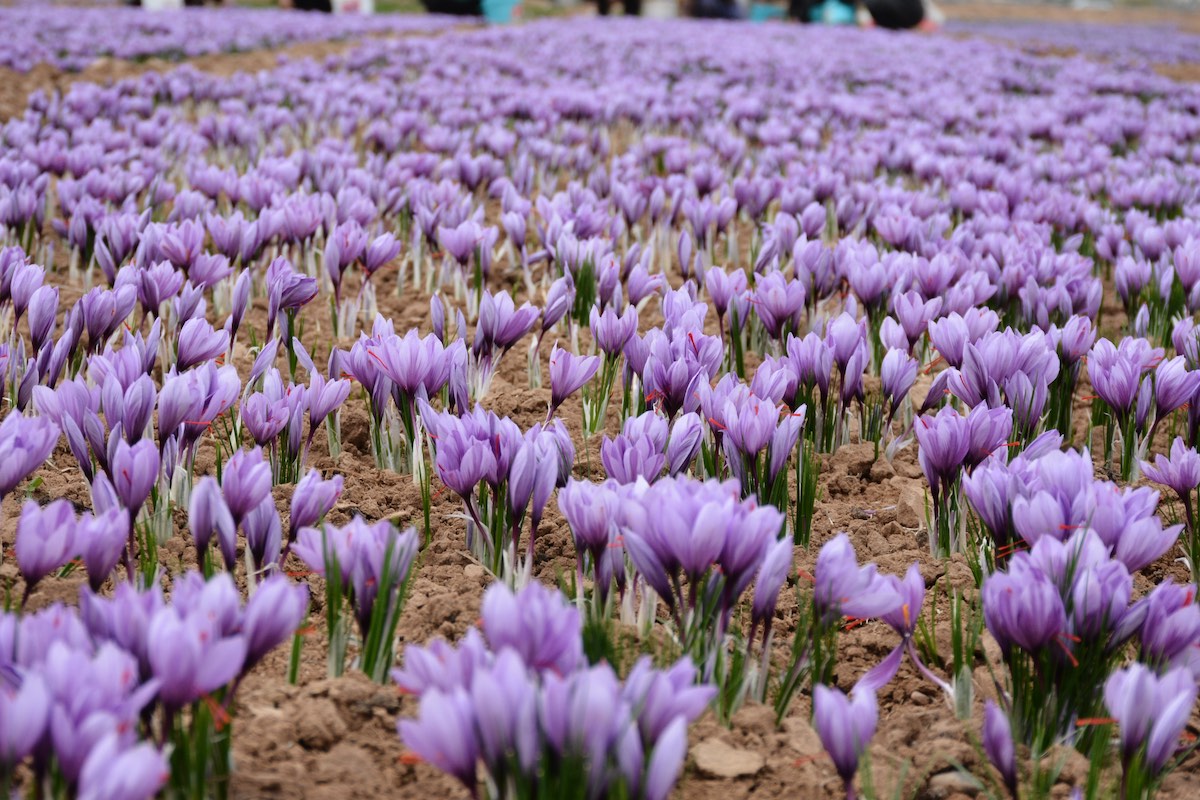
What is Saffron?
Saffron is a spice that comes from the stigma of the saffron crocus flower, crocus sativus. Likely originating in Greece thousands of years ago, saffron is grown throughout Europe and Asia, mainly in the Middle East, with Iran producing over 80% of the world’s saffron. Known for being the world’s most expensive spice, the highest quality saffron can sell for more than the price of gold by weight.
The high cost comes from the hands-on labor that goes into its harvest. The spice comes from the stigma and styles of the saffron crocus flower, and each tiny flower has only three threads of saffron. Despite massive advances in agricultural technology, the delicate spice can only be harvested carefully by hand – it takes over 4,000 blooms to produce a single ounce of saffron. That hasn’t stopped it from becoming a staple in global culinary cuisine from Spanish paella to Persian rice dishes like tahdig. Saffron is also prized for its medicinal qualities.
Why Vermont Saffron?
While the majority of saffron comes from the middle east, our home state of Vermont also has a climate conducive to growing a very high quality crop – and a burgeoning saffron industry! In 2015, a research pilot program began at the University of Vermont to see if saffron could be grown by farmers in the Northeast U.S.
The result: it can.
According to findings from the University, farmers saw that saffron “survives cold Vermont winters, and yield and quality of their crop compares with or exceeds saffron from traditional production areas, such as Spain, Iran and Italy.” Hundreds of growers across the US and Canada – including our saffron suppliers at Calabash Gardens – are now growing this crop with promising results thanks to their work. Today, UVM is home to the North American Center for Saffron Research & Development, and has been an invaluable source of information as we worked to develop our Vermont Saffron Infused Honey.
